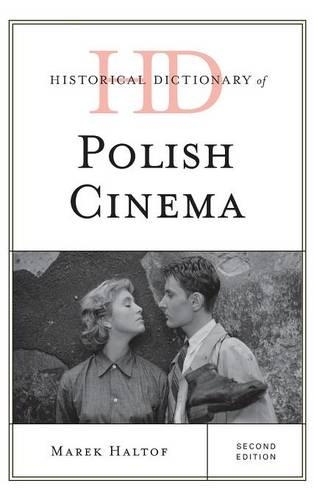
Historical Dictionary of Polish Cinema
(Hardback, Second Edition)
Publishing Details
Historical Dictionary of Polish Cinema
By (Author) Marek Haltof
Bloomsbury Publishing PLC
Rowman & Littlefield Publishers
2nd February 2015
Second Edition
United States
Classifications
General
Non Fiction
Reference works
791.4309438
Physical Properties
Hardback
384
Width 161mm, Height 236mm, Spine 32mm
689g
Description
In 1902, scientist and inventor Kazimierz Prszyski made the first Polish narrative film, The Return of a Merry Fellow. Since then, the Polish film industry has produced a diverse body of work, ranging from patriotic melodramas and epic adaptations of the national literary canon to Yiddish cinema and films portraying the corrupt side of communism. Poland has produced several internationally known films, including Andrzej Wajdas war trilogy, A Generation (1955), Kanal (1957), and Ashes and Diamonds (1958); Roman Polaskis Knife in the Water (1962); and Andrzej Munks The Passenger (1963). Often performing specific political and cultural duties for their nation, Polish filmmakers were well aware of their role as educators, entertainers, social activists, and political leaders. This second edition of Historical Dictionary of Polish Cinema fills the gap in film scholarship, presenting an extensive factual survey of Polish film. Through a chronology; an introductory essay; appendixes, a bibliography; and over 300 cross-referenced dictionary entries on films, directors, actors, producers, and film institutions, a balanced picture of the richness of Polish cinema is presented. Readers with professional interest in cinema will welcome this new work, which will enhance senior undergraduate or postgraduate courses in film studies.
Reviews
Fully updated, this new edition by Haltof, who also penned the first edition in 2007 as well as other notable studies of the cinema in Polandincluding Polish Film and the Holocaust and The Cinema of Krzysztof Kieslowski here provides an excellent survey of Polish film from 1895 through 2014. The work includes a chronology of major events in Polish cinema along with the historical context. The 315 entries, which range from half a page to four pages, cover specific films, leading actors, directors, film schools and movements, and studios. Other entries discuss notable genres and themes, such as one on 'Gay and Lesbian Cinema.' Of particular note are the comprehensive entries on the Polish School of filmmaking and the representation of the Holocaust. Entries for specific films are listed under their English titles, making this work easily accessible to readers who lack Polish-language skills. The work includes appendixes noting top television films and box office hits from 1945 to 2013 along with numbers of viewers, although the author's source for such viewership data is not indicated. The outstanding 58-page bibliography is organized by subject and provides references to print and online resources in both English and Polish. Summing Up: Essential. Upper-level undergraduates through researchers/faculty. * CHOICE *
Author Bio
Marek Haltof is professor at Northern Michigan University in Marquette. He has published several books, among them Polish Film and the Holocaust: Politics and Memory (2012), The Cinema of Krzysztof Kielowski: Variations on Destiny and Chance (2004) and Polish National Cinema (2002).
